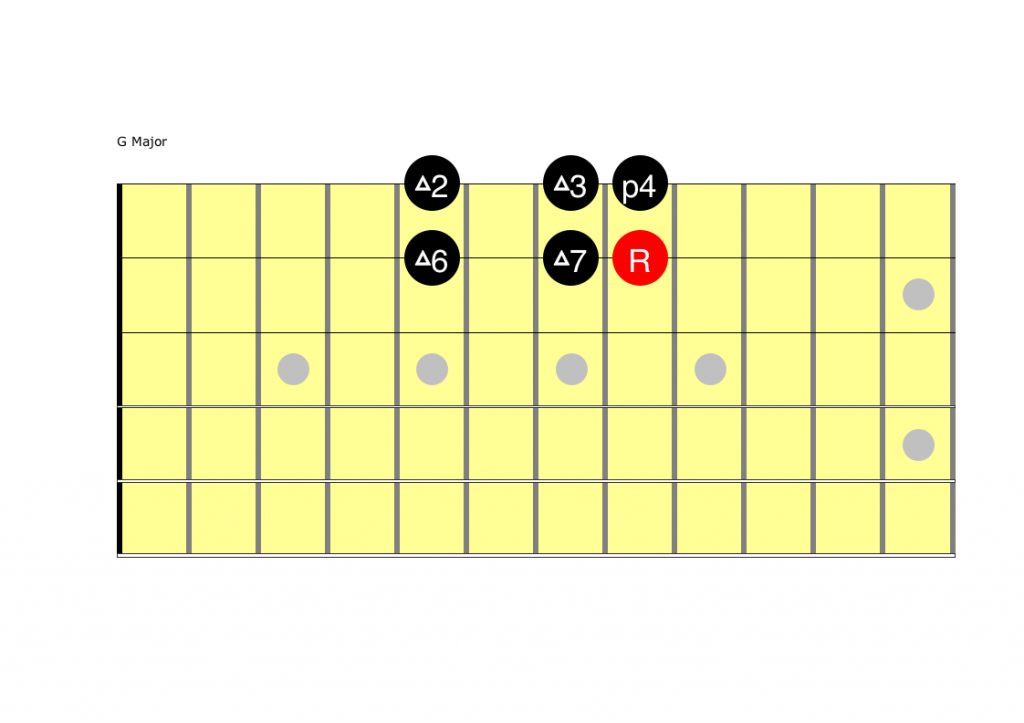Targeting chord tones
A chord is three or more notes played at the same time. When you’re playing single notes over a chord, a common starting point is playing the notes from the same scale as the key. So if the chords are taken from the key of G, you’d play G major scale over that progression. This is not incorrect, but it’s incomplete.
If you play a note from the actual chord while that chord is playing, it will sound really consonant and like it fits closely with the chord. You might not always want that sound, but it’s good to learn how to get it before you start deliberately exploiting dissonance.
Try this out now – Start with position 1 of the G major scale, and use the top two strings. The notes are (top string) A B C and (second string E F#G).
First, go from a G chord to a C chord, and make sure to play one of the notes in a C chord (C E or G) when the chord changes to C, and then one of the notes from G when the chord changes to G.
Second, play any notes from the G major scale over one chord, but resolve to a chord tone when the chord changes. You can do this by memorizing which the chord tone is, or by using a fragment of a chord shape. When you hold down the chord shape and play the notes one at a time instead of all together, that’s called an arpeggio or a broken chord. Try both. The nearest triads (=3 note chord) to that scale shape for G and C is the ‘D shape’ G triad at 7th fret, and the 6th string root ‘E shape’ C triad. NB – even though that triad is the top half of a full barre chord, don’t play the full barre chord-it’s cumbersome, just go straight for the top three strings. Ideally, you’re going do to this over G and C, and over G and D, and then over G, C, D, G and different permutations of those chords.
A futher level of detail for later on is to select exactly which chord tone (the root, third or fifth) you’re going to go for-as whilst all are consonant, they have subtly different effects. So whilst you don’t need to memorise that right now, if you find yourself pegging each chord tone as root, third or fifth, that’s going to be useful later.
G-C
G – D
G C D G
If you want more of a challenge, see if you can add a few passing notes in between the chord tones.
|
Chord |
1 |
3 |
5 |
|
G |
G |
B |
D |
|
D |
D |
F# |
A |
|
Em |
E |
G |
B |
|
C |
C |
E |
G |
